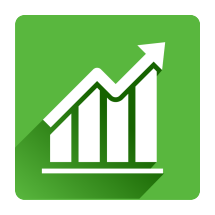
Marketing content shared with Michigan Business Network by:
Bonnie J. Knutson, PhD
The School of Hospitality Business
Broad College of Business
Michigan State University

I was listening to our neighbor’s teenagers rant about the fact that they absolutely needed for new jeans. Their “old” ones were not worn out or neither did they no longer fit. But, as every parent know, teens “cannot be seen” wearing their old skinny jeans when flared, bell-bottoms, wide leg and boot cut are the new “in” fashion trend.
New? Trend? Are they kidding?
Two things are wrong with these teens’ assumption. First, flared, bell-bottom, wide leg and boot cut jeans are not new. If you doubt that, rifle through old photos that are stuffed into a shoebox. Or pull out the one pair that you stuck in the back of your closet because “someday” you will wear them again.
Second, the change in the leg width of a pair of jeans is not a trend. It is a fad that is nothing more a reincarnation of what some of us wore in younger days.
So what does all this have to do with your business? Simple. To make smart decisions about how you allocate our resources – time, talents (staff), and treasure (revenues) -- you must recognize and understand the difference between a trend and a fad. A fad, by definition, is a short-term event, what some may call a 'flash in the pan.’ In fashion, it can be a color, or the length of a hemline, or our skinny vs. bootcut jeans. A trend, on the other hand, has the potential of becoming a long-term influence on the future of a business; it is also directional. That is, it increases (sustainability) or decreases (formality) over time. Businesses need to focus their time, talents, and treasure on trends, not fads because the lifespan of most fads is notoriously short.
This difference can readily be seen in the wellness movement. When scientific evidence demonstrated an inverse relationship between health and obesity, fad diet plans emerged as did faddish exercise devices (as still pop up on late-night infomercials). Dinner plates that were covered with a 12-ounce steak and a large baked potato ladened with butter and sour cream started giving away to the healthy plate guide of ¼ protein, ¼ grain, and ½ fruit and/or vegetables. But the food is not the trend. The trend is wanting to live longer, healthier, active lives.
The long-term trend towards health and well-being impacts not only your company but wearables, agriculture, energy, indoor recreation, technology, mental health…ad infinitum. In fact, some say that the difference between a fad and a trend is the number of industries it affects. A fad often appears in a single industry and rarely crosses over into others. A trend crosses over into virtually all industries – including yours – but offers different opportunities to each.
The recent pandemic has accelerated some trends and diminished others more rapidly than we have experienced at any time in history. This was confirmed by Accenture’s recent survey of more than 25,000 consumers. More than half say that the pandemic caused them to rethink their purpose in life and re-evaluate what is important to them in life. They are applying this new mindset to where, what, and how they buy. This is what is often termed a generational marker that alters how we think and behave. This is not a short-term fad. This is a long-term trend affecting every business in every industry. How can you take advantage of this tsunamic trend? Here are what I call the Fab Four Trends impacting businesses today and tomorrow:
Community. People are social animals; we are not meant to be loners. Put your creative hats on to develop creative ways for your customers to connect with your brand and with each other
Convenience. The old saying that time is money is a driving force as we all have taken on additional roles and had to learn new skills. More than half of consumers say the one thing they need more of is time, the second is energy. Thinking beyond ordering online and home delivery, what can you offer customers to make it easier to spend their time and money with you?
Customization. While we all want to be part of a community, we also want things personalized. This trend is perhaps the easiest on which you can capitalize because, as the old saying goes, “They may forget what you said, but they will never forget how you made them feel.” And it doesn’t have to be expensive. My husband, Bob, always remembered how special he felt when, at a farmer’s market, a candy vendor heard us talking about that being his birthday. When he gave us the caramel apples we had ordered, on one, in chocolate script, he had written, Happy Birthday Bob. Simple. Personalized. Effective.
Compelling. This trend brings us back to one that had its genesis with the publication of The Experience Economy and encompasses Community, Convenience, and Customization. i It has fully arrived. “Much has changed over the last 20 years, of course, yet one constant has
persisted throughout: a shift away from merely producing and purchasing goods and services, to a focus on creating and consuming experiential value…We now consume time most of all. People value two forms of time: time well saved and time well spent. As less time (and money!) is spent on goods and services, less time in stores and with call centers, people simultaneously spend more time (and money!) on experiences that engage them in a personal and memorable way.”ii I could not have said it any better.
So the bottom line is this: Trends give the rise to new, unique, and value-ladened opportunities for your customers. What do you see for your business?
Your bottom line will thank you! i James H. Gilmore and B. Joseph Pine II; Harvard Business School Press, 1999. ii https://www.pcma.org/experience-economy-change-event-design/












